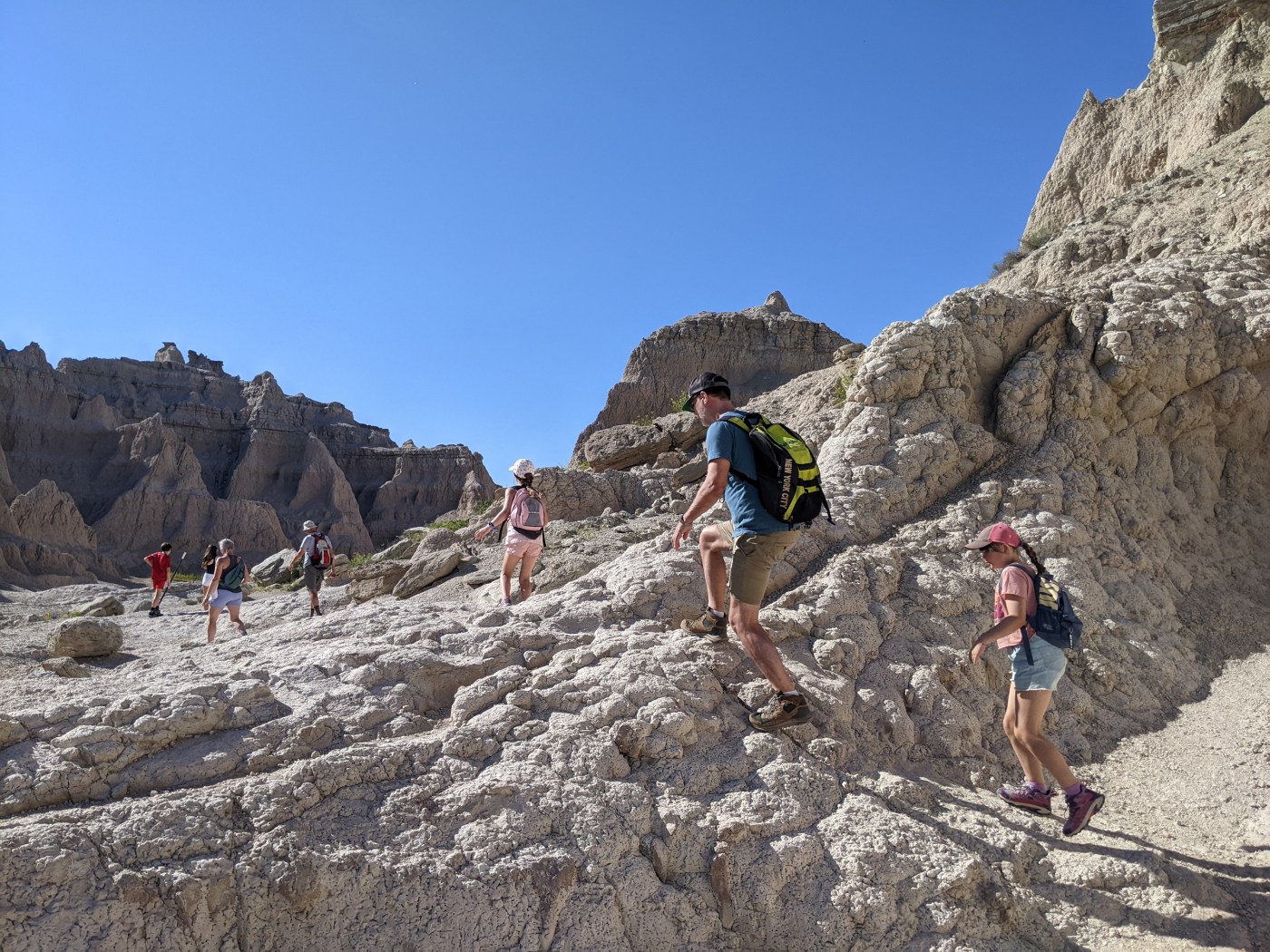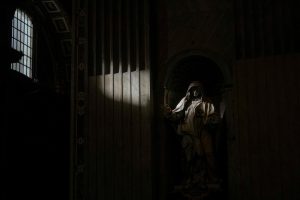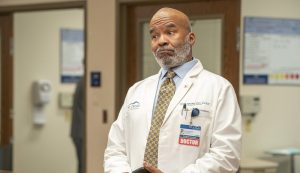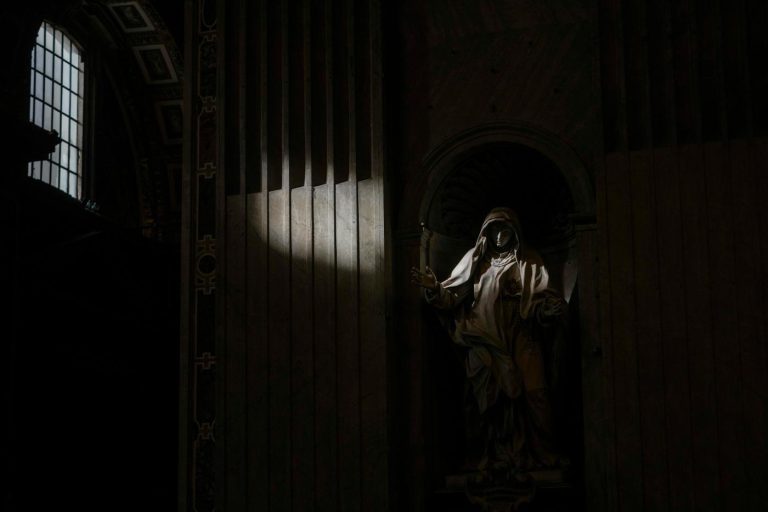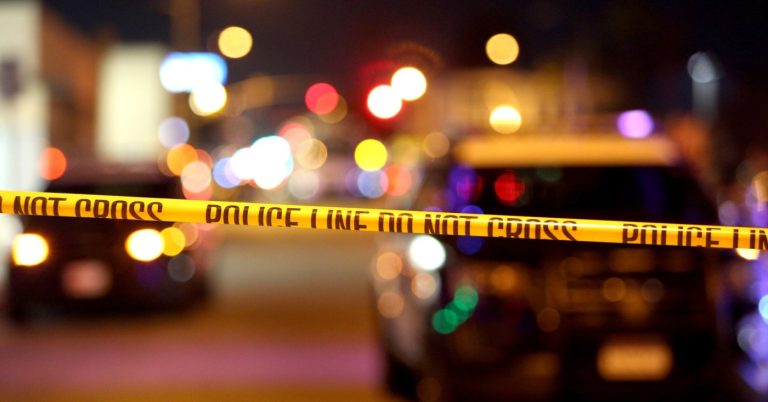Erica Pearson | (TNS) The Minnesota Star Tribune
All at once, we noticed the teeth — a whole row of them, big, gray and pointed.
During several days of hiking at Badlands National Park, our girls had been determined to spot a fossil, stopping to scan the ground constantly.
They were looking for any differences in texture, trying to spot smooth bones as we walked along an outcropping of the park’s striking rock formations. The wind and rain erode the rocks of the Badlands at a rate of about 1 inch per year, constantly exposing fossils from tens of millions of years ago.
By that point, my husband and I were a little tired of urging our kids, 7 and 10, to keep moving. So we weren’t expecting much when the younger, Emilia, shouted that the two of them had found something just off the trail. Her sister, Elise, had noticed a small, white bone fragment near where they had stopped for a water break. Emilia took a closer look and realized that a much bigger piece was embedded in the cracked, crumbly ground.
Once we saw those teeth, we realized that they had discovered the jaw and maybe even the whole head of something ancient. The whole family was excited to tell park rangers about the find.
In reporting the girls’ discovery, we took part in the South Dakota park’s Fossil Finder program, a citizen science project. The experience was a highlight of our stay in the otherworldly landscape of the Badlands, where we also enjoyed stargazing, bison spotting and hikes such as the Notch Trail, with its log-ladder climb.
We later learned the girls had discovered the fossilized jaw of an oreodont — an ancient creature that paleontologists say likely looked like a cross between a camel, a sheep and a pig.
Inside the park’s Ben Reifel Visitor Center is a working paleontology lab, where we watched scientists and interns prepare fossils and learned about the ancient mammals that lived here millions of years ago.
The park is home to one of the world’s richest fossil beds, and the self-guided Fossil Exhibit Trail a short drive from the center has replicas and exhibits about the extinct creatures — including ancient ancestors of horses and rhinos.
The parklands were once a savannah, with abundant grassland and herds of oreodonts, which paleontologists estimate were once as common as zebras are in Africa’s Serengeti region today. They roamed here during a period from the Eocene to the Miocene Eras that stretched from 40 million to 5 million years ago.
In the lab, display cases are filled with visitors’ finds, and the park works to keep people from poaching discoveries by encouraging them to leave fossils where they are and document and report them at the center.
The new direct flights to Ireland are dreamy – but here’s why you should skip Dublin
When we first arrived, a ranger told us about one of the most dramatic discoveries, which happened in 2010. A little girl spotted a shiny white part of a fossil in the ground near the visitor center and filled out a report. It turned out to be a rare, well preserved fossil of a saber-tooth cat called a nimravid. A puncture in the fossilized skull suggests that the ancient creature was killed in a cat fight with another nimravid.
This tale was what left our girls inspired to try to make a discovery of their own, turning every hike into a fossil expedition until they did.
While oreodonts are a much more common find, a ranger helped them fill out a form to document the site, complete with a description and GPS coordinates, so a paleontologist could follow up. She took a photo of them — both smiling and proud — to hang up in the lab and gave them each a “fossil finder” patch.
Many of the park’s marked hikes are short, and we enjoyed several during the relatively cool mornings — including the popular Notch as well as the Window, Door and Cliff Shelf trails. We hiked one leg of the longest trail in the park, the 10-mile round-trip Castle Trail, which brought us through the prairie along the edge of badlands formations. On one afternoon, we drove past the striking Pinnacles Overlook to Roberts Prairie Dog Town, where a large herd of bison grazed nearby.
In all, we spent three nights staying inside the park, in one of the tiny cabins run by the Cedar Pass Lodge. The no-frills lodge dates back to 1928, before the Badlands became a national monument (it became a national park in 1978.)
From the back porch, we watched storms roll in nearly every evening, lightning flashing above the buttes in the distance. The rains quicken the erosion of the park’s rock formations, uncovering fossils for future visitors to spot.
The storms held off on our last night. Right before sunset, we stepped off the boardwalk out onto the primitive portion of the Door Trail. The girls ran along the bedrock from trail marker to trail marker as the sun reached just the right angle, hitting the rock formations and making them glow.
_______
If you go
Badlands National Park
Where: western South Dakota
Admission: $30/vehicle (nps.gov/badl).
Ben Reifel Visitor Center: 25216 Hwy. 240, Interior, S.D.
Cedar Pass Lodge: 20681 Hwy. 240, Interior; cedarpasslodge.com.
_________
©2024 The Minnesota Star Tribune. Visit at startribune.com. Distributed by Tribune Content Agency, LLC.
